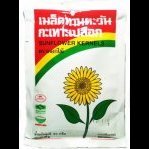What is Your Favorite Technique?
-
Most Recent Topics
-
Latest Comments
-
Hi everyone, I’ve recently started incorporating kettlebells into my workout routine, and I’m trying to understand the most effective ways to use them safely. I’m curious about proper form, ideal weight selection for beginners versus intermediate users, and how often kettlebell workouts should be done each week for strength versus endurance. Additionally, I’ve heard conflicting advice about combining kettlebell exercises with traditional weightlifting or cardio. Does anyone have tips, routines, or personal experiences they can share? I want to maximize results while avoiding injury.
-
The Latest From Open Topics Forum
-
Hi everyone, I’ve been training in Muay Thai for a while, and I’ve noticed that my posture isn’t as good as it could be, especially when shadowboxing, clinching, or holding the guard. Sometimes I catch myself slouching or leaning forward, which I worry might affect my technique or cause long-term issues. I’m curious if anyone has experience improving posture specifically for Muay Thai. Do posture correctors help, or are there exercises, stretches, or training habits that work better? Any tips, routines, or personal experiences would be really helpful to maintain a strong, proper stance.
-
By Snack Payback · Posted
I can only comment on Perth. There's a very active Muay Thai scene here - regular shows. Plenty of gyms across the city with Thai trainers. All gyms offer trial classes so you can try a few out before committing . Direct flights to Bangkok and Phuket as well. Would you be coming over on a working holiday visa? Loads of work around Western Australia at the moment. -
By kkadzielna · Posted
Hi, I'm considering moving to Australia from the UK and I'm curious what is the scene like? Is it easy to fight frequently (proam/pro level), especially as a female? How does it compare to the UK? Any gym recommendations? I'll be grateful for any insights.
-
Forum Statistics
-
Total Topics1.4k
-
Total Posts11.6k
-
Footer title
This content can be configured within your theme settings in your ACP. You can add any HTML including images, paragraphs and lists.
Footer title
This content can be configured within your theme settings in your ACP. You can add any HTML including images, paragraphs and lists.
Footer title
This content can be configured within your theme settings in your ACP. You can add any HTML including images, paragraphs and lists.

Recommended Posts
Create an account or sign in to comment
You need to be a member in order to leave a comment
Create an account
Sign up for a new account in our community. It's easy!
Register a new accountSign in
Already have an account? Sign in here.
Sign In Now